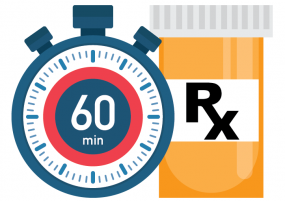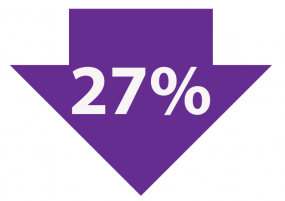Illinois Perinatal Quality Collaborative Reduces Severe Pregnancy Complications from High Blood Pressure
The Problem: Rising Pregnancy Complications

Each year, too many US women are affected by severe pregnancy complications. This number has steadily increased in recent years. Rates of severe pregnancy complications associated with preeclampsia (high blood pressure, also called hypertension, and other signs that organs are not working normally) were also rising in Illinois. In response, the Illinois Perinatal Quality Collaborative (ILPQC) started the Severe Maternal Hypertension Initiative. This project aims to engage clinicians, public health leaders, and patient advisors to improve care for pregnant and postpartum women with the following health conditions:
- 27% decline in severe pregnancy complications and death.
- 87% of patients receiving timely treatment.
- Severe preeclampsia.
- Eclampsia, a complication of preeclampsia resulting in seizures.
- Hypertension before pregnancy and who developed preeclampsia.
Plan: Develop a Strategy for Success
The ILPQC put into place quality improvement (QI) science and evidence-based practice guidelines in hospitals to help reduce pregnancy complications caused by hypertension. As part of the initiative, ILPQC provided participating hospitals opportunities for collaborative learning, rapid response data, and QI support. ILPQC collaborated with public health professionals at the state and national levels to develop key driver diagrams, process and outcome measures, data forms and reports, and an implementation strategy. A total of 108 hospital teams joined the effort.
ILPQC worked to improve care for women with severe hypertension through the following strategies:

- Reduce the time to treatment of severe hypertension to 60 minutes or less.
- Provide education to patients at delivery discharge.
- Schedule a postpartum follow-up appointment within 7 to 10 days.
- Conduct clinician debriefings between nurses and other health care providers to address successes and opportunities with treating severe hypertension cases.
Action: Steps for Effective Implementation
Over the course of the initiative, ILPQC took the following actions to address the problem:
- Held 2 face-to-face meetings and 18 monthly 1-hour collaborative learning webinars.
- Collected, reported, and monitored data on patients with severe hypertension using the ILPQC web-based data system.
- Used QI strategies to test and implement protocols to recognize, prevent, respond, and learn from cases of severe hypertension.
- Initiated QI calls with hospitals that needed additional support.
- Developed a toolkit and a webinar series that is available on the ILPQC website.
Result: Improvements in Maternal Hypertension Care

As a result of their efforts, care for pregnant and postpartum women with severe hypertension improved significantly within 2 years.
- The percentage of women with sustained new-onset severe hypertension receiving medication within 60 minutes (time to treatment) rose from 41% to 87%.
- The number of women who received preeclampsia delivery discharge education materials increased from 41% to 89%, and the number of women with severe hypertension who had a postpartum follow-up appointment scheduled increased from 68% to 83%.
- The number of debriefings between nurses and other health care providers increased from 17% to 59%.
- The overall rate of severe pregnancy complications and maternal deaths within 1 year of pregnancy decreased by 27%, from 12% to 8%.
After carrying out the initiative, the ILPQC continued to provide support for hospital sustainability planning, monthly review and reporting of data, and quarterly webinars. Time to treatment rates continued to improve.
Lessons Learned: Engagement Is Key
The ILPQC identified these essential components for success:
- Working closely with state and national partners is essential to communicate hospital needs and share resources.
- Providing opportunities to engage health care providers as leaders can generate buy-in for the initiative.
- Sharing monthly data reports with health care providers is key to define the problem, motivate change, and facilitate improvement.
- Engaging nurses and other health care providers in sustainability planning and compliance monitoring helps support project gains.
This success story reflects information as reported by ILPQC.